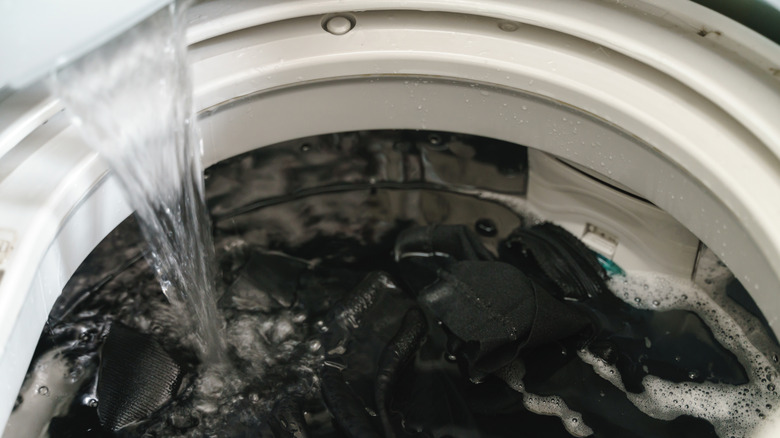The Easy Trick That Can Help Defrost Frozen Laundry Pipes During Winter
Dealing with frozen pipes can be among the biggest stressors in winter. Washing machines are particularly vulnerable to frozen pipes because they are often kept in cold, uninsulated parts of the house, such as garages or basements. While insulating the pipes is essential to prevent freezing, sometimes they freeze before you can get them insulated. In this situation, you can fill the washing machine with warm water to help defrost the pipes in winter.
The amount of time it takes the pipes in your home to freeze in the cold weather depends on the type and size of the pipe, temperatures, drafts, wind chill, the location of the pipes, and insulation. Pipes on the exterior walls without sufficient insulation are going to freeze faster than interior pipes. When the temperatures drop dramatically and stay cold for many days, the pipes are more likely to freeze and burst.
Frozen pipes burst because the water inside the pipes expands as it freezes. This causes pressure to build inside the pipes, which can weaken them and cause them to burst. Pipes located in unheated areas of the home, such as basements and garages where laundry machines are often located, are at greatest risk of bursting. When a frozen pipe in the laundry room cannot be prevented, it's important to act quickly to avoid the damage frozen pipes can cause in your home.
Safely defrosting frozen laundry pipes
In the washing machine, the tub and drain hose may freeze, in addition to water pipes. You can gently thaw the frozen washing machine by filling it with warm, but not boiling, water. Add warm water to the washing machine tub for top loading washers. Front loading washing machines can be filled almost to the height of the door. Let the warm water sit inside the tub for an hour. Put a bucket near the drain hose to drain the water and thawed ice.
Warming the pipes or the space around frozen pipes can help thaw the ice. In heated areas of the home, you can turn up the heat or use a space heater to increase the temperature. When washing machines are in unheated areas of the home, you can use a hair dryer to thaw the pipe. Set the hair dryer to low heat and move it continuously along the length of the frozen pipe. Holding it too long in one area could overheat the pipe and cause it to burst.
Taking steps to prevent frozen pipes can help you avoid the hassle of trying to thaw the pipe and prevent damage from a burst pipe. Effective steps to take include insulating your washing machine pipes, allowing a faucet to drip in cold temperatures, or using a space heater in the laundry room. There are some useful products to prevent your pipes from freezing during winter, such as insulation wrap and heat tape.

